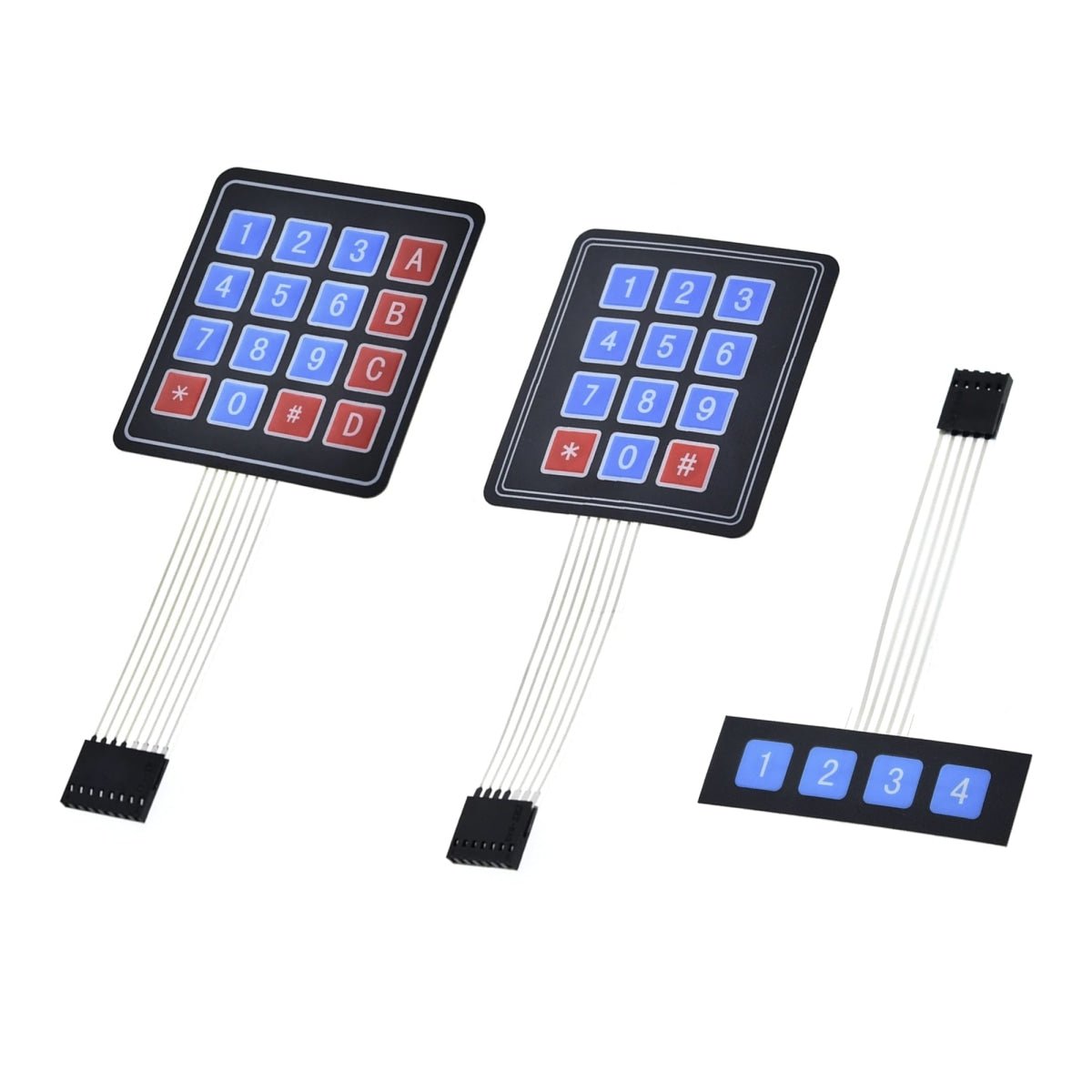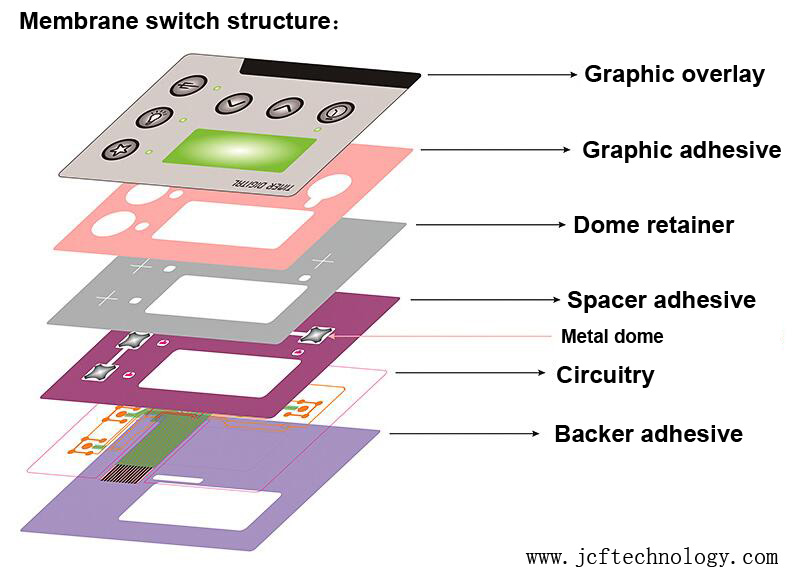How to Choose the Right Membrane Switch for Your Next Project
Wiki Article
The Advantages of Making Use Of Membrane Layer Switches in Customer Electronics
Membrane layer buttons are progressively identified for their substantial benefits in consumer electronics, especially in enhancing user interaction and streamlining production processes. The versatility in style enables for tailored solutions that meet diverse customer demands.Improved Customer Experience
In today's affordable landscape of customer electronic devices, improved individual experience is paramount; virtually 85% of customers prioritize user-friendly interfaces. Membrane layer changes play a vital duty in accomplishing this level of usability.The tactile responses given by membrane buttons is crucial for directing customer activities, guaranteeing that commands are registered properly. This comments device lessens errors and increases user complete satisfaction, cultivating a positive connection in between the individual and the tool. The adjustable nature of membrane switches enables manufacturers to customize interfaces to certain individual demands, making gadgets a lot more available and welcoming.
In addition, membrane switches can incorporate backlighting and visuals overlays, better improving exposure and usability in varied environments. This flexibility ensures that tools remain user-friendly and functional, despite the setting. Overall, the integration of membrane layer switches over into consumer electronics significantly boosts user experience, driving brand loyalty and fulfillment in an increasingly affordable market.
Economical Production
Consumer electronics manufacturers are regularly looking for means to stabilize quality with cost, and membrane layer switches offer a compelling solution for economical manufacturing. membrane switch. These elements are naturally simpler than standard mechanical switches, which lowers both production costs and intricacy. The lightweight design of membrane layer changes enables reduced shipping costs and less complicated combination into small tools, further enhancing their charm in a competitive market
Manufacturers can create membrane layer buttons in high quantities, benefiting from economies of scale. This mass production capacity guarantees regular quality while substantially decreasing per-unit prices. Furthermore, the products used in membrane layer buttons, such as polyester and polycarbonate, are commonly less costly than those needed for standard button innovations, adding to total expense savings.
The production process for membrane switches typically calls for less steps and much less labor contrasted to various other button types. This structured technique not just minimizes labor prices but likewise increases time-to-market, enabling companies to respond swiftly to consumer demand. Consequently, the mix of lowered material costs and efficient production processes settings membrane switches over as a clever financial investment for manufacturers intending to deliver high-grade customer electronic devices at competitive cost points.
Design Versatility and Customization
While standard mechanical switches typically impose constraints on layout due to their bulk and needed installing devices, membrane switches give unmatched adaptability and customization options for consumer electronic devices. This cutting-edge innovation enables designers to create smooth, inconspicuous user interfaces that can flawlessly integrate into numerous item appearances, from smartphones to kitchen area devices.Membrane layer buttons can be generated in virtually any type of form or dimension, making it possible for producers to customize the format to details ergonomic and useful needs. This flexibility not only improves individual experience however also permits artistic styles that align with brand name identification. The use of published graphics on membrane changes supplies the possibility for intricate styles and lively shades, which can be easily modified without substantial expense implications.
In addition, membrane layer buttons can include numerous capabilities right into web a single layer, decreasing the demand for numerous elements and simplifying setting up processes. This structured layout approach decreases room and weight, making it suitable for portable customer electronic devices. On the whole, the layout adaptability and personalization abilities of membrane changes equip manufacturers to introduce, inevitably causing even more straightforward and appealing items.
Longevity and Reliability
As technology continues to evolve, the longevity and dependability of membrane switches have actually come to be essential considerations for producers in the customer electronics market. Membrane layer switches are designed to hold up against rough ecological conditions, including temperature fluctuations, wetness, and dirt exposure. Their durable construction usually involves multi-layered products that give a reliable barrier versus contaminants, making certain longevity and regular efficiency.Along with ecological resistance, membrane layer switches offer remarkable mechanical integrity. Unlike standard mechanical switches, which may wear out over time, membrane layer switches use a sealed style navigate to these guys that minimizes the danger of mechanical failing. The absence of relocating parts not only enhances their life expectancy yet additionally lowers wear and tear, making them optimal for high-usage applications.
Moreover, membrane switches can endure a substantial number of actuations without loss of capability, frequently going beyond millions of cycles (membrane switch). This longevity translates to reduce replacement prices and browse around these guys reduced downtime for customers and suppliers alike. Overall, the mix of ecological resilience and mechanical reliability makes membrane layer changes a tactical option for customer electronic devices, ensuring that devices continue to be operational and efficient throughout their designated life-span

Streamlined Product Development
The toughness and reliability of membrane switches over dramatically add to structured product advancement in the customer electronics market. By integrating these switches early in the layout process, producers can decrease the complexity and number of components needed in their products. Membrane buttons are compact and light-weight, allowing for much more reliable room usage within devices, which can bring about streamlined assembly processes.
The ease of making membrane switches additionally plays a vital function in product growth. With modern printing methods and products, manufacturing can be scaled efficiently, lowering and lessening lead times waste. This leads to lower manufacturing prices, enhancing overall profitability.

Conclusion
In verdict, membrane layer switches dramatically improve customer electronic devices by giving an improved customer experience, cost-effective manufacturing processes, and flexible style options. Their sturdiness and integrity guarantee constant efficiency in different settings, while streamlined item growth facilitates quicker time-to-market. These benefits collectively contribute to the technology and functionality of customer tools, addressing the developing demands of individuals effectively. The integration of membrane changes stands for a calculated selection for producers seeking to enhance product style and efficiency.Membrane layer switches are significantly identified for their significant benefits in customer electronic devices, specifically in boosting individual communication and streamlining manufacturing processes. Furthermore, the products used in membrane layer switches, such as polyester and polycarbonate, are frequently less pricey than those required for traditional button technologies, contributing to general cost financial savings.
The production process for membrane switches over typically requires fewer actions and much less labor contrasted to other button types. Unlike traditional mechanical buttons, which might use out over time, membrane layer switches over utilize a covered design that minimizes the danger of mechanical failure.In final thought, membrane layer switches over dramatically boost customer electronic devices by offering a boosted customer experience, economical production procedures, and versatile design alternatives.
Report this wiki page